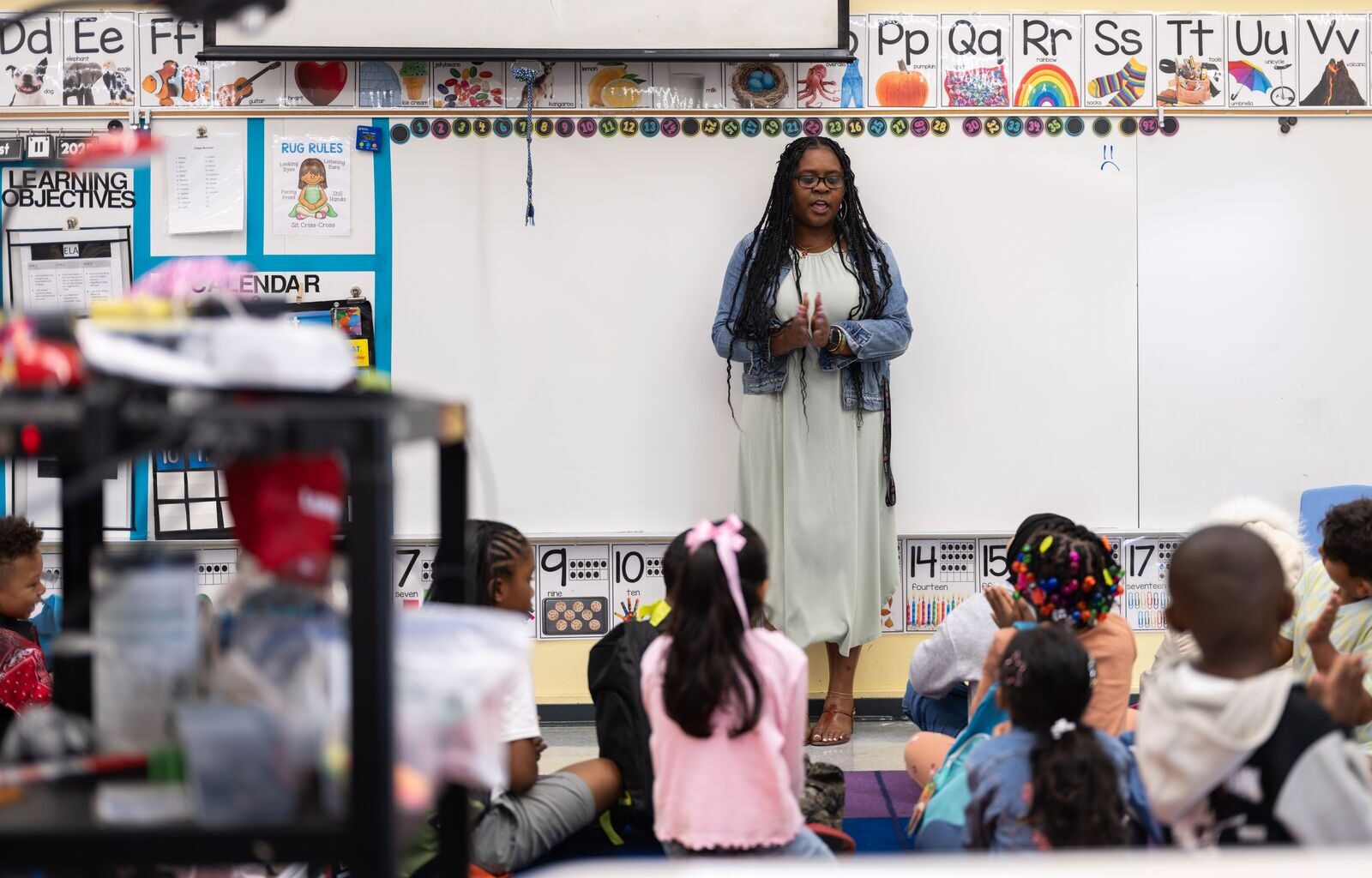After years of flat or declining enrollment, student numbers have ticked up for the 2025-2026 school year in the Oakland Unified School District.
Census day is the first Wednesday in October, when OUSD and other California districts submit a snapshot of their enrollment to the state for official counts. While enrollment fluctuates throughout the year, census day counts are what the state uses for funding allocations. This year, that number is 34,135 — 673 students higher than the district’s initial projections. Last year, OUSD’s official enrollment count was 33,838, according to state records.
“One year of data does not make a trend line,” said Kilian Betlach, OUSD’s executive director of enrollment. But he said he and other OUSD officials are cautiously optimistic about the modest gains.
The numbers may be revised after an audit by the time the state releases the official counts in the spring, but the increase could mean several million more dollars in funding for the cash-strapped district. It is also an indication that the strategies OUSD has pursued for stabilizing and increasing enrollment may have been effective, at a time when birth rates are down, families are leaving Oakland, and school districts across the country are facing declining enrollment — and bracing for school closures.
Betlach, who has been in his role since 2022, attributes the numbers to a few things: Since 2021, OUSD has invested at least $5 million to increase enrollment office staffing and develop new ways to market the district’s schools. The district launched a podcast, “Grow With Us,” that Betlach hosts. Bus and billboard ads feature photos of Oakland students reading or playing at school, inviting the public to consider enrolling with OUSD. Social media accounts for OUSD’s elementary, middle, and high schools showcase students going on field trips, hosting rallies, and having movie nights. Staff scrutinized the enrollment process to find ways to improve it for families who aren’t English-speaking, middle-class, or tech-literate. And the expansion of transitional kindergarten has not only added 1,200 new students — it has familiarized families with elementary schools they might not have otherwise considered.
“We’ve absolutely put a lot of time and effort into helping schools tell their stories better,” Betlach told The Oaklandside this week. “One of the things that’s been really helpful in that work is that OUSD schools are already better than most people know.”
 An ad for Oakland schools on the 14 bus. Credit: Esther Kaplan/The Oaklandside
An ad for Oakland schools on the 14 bus. Credit: Esther Kaplan/The Oaklandside
OUSD is a school choice district, which means families can choose any school and aren’t restricted to the school zoned for their neighborhood. Families also have a range of charter and private school choices.
With a veteran principal at the helm, experienced teachers and staff, and an active PTA, Laurel Elementary was one underenrolled school that just needed a little help telling its story. The enrollment office has helped highlight Laurel on social media by publicizing school tours and open houses, principal John Stangl said.
During the 2023-2024 school year, Laurel had 412 students enrolled. Last year it had 473. This year, it’s around 480, Stangl said.
“There’s a lot happening at schools and sometimes the marketing piece kind of falls outside of our area of expertise,” Stangle told The Oaklandside. “What’s new is the amount of support that we’ve received from the district and from the enrollment office.”
The importance of maintaining attendance
OUSD’s apparent increase in enrollment may mask some worrying trends: as the Trump Administration intensifies immigration enforcement and restricts access to visas and asylum claims, OUSD has seen fewer immigrant students enrolling this year. The high demand for transitional kindergarten spots means OUSD is about at its limit for facilities that can accommodate very young students. The district is also facing a budget crunch, with deep cuts expected. Last year, the enrollment office had its budget slashed and future funding is uncertain.
Maintaining the enrollment gains in the coming years is just one part of the equation. Keeping up high attendance levels is just as key in improving the district’s budget outlook, district leaders have repeatedly emphasized.
“It’s really critical that we think of those two things together,” Denise Saddler, the district’s interim superintendent, said at a school board meeting earlier this month.
The district’s average daily attendance, the rate the state uses to calculate funding, was around 90% last year. So far this year, it’s at 93%, according to district data. That difference could be worth millions in state funding.
A few years ago, Laurel received a playground upgrade from Stephen and Ayesha Curry’s Eat. Learn. Play. Foundation, which is aiming to revamp 25 OUSD play spaces. A new mural went up outside the school’s cafeteria that beautifies the campus and showcases the school logo to people driving by. Making school a more joyful place, where families and students look forward to going, has been crucial in attracting and retaining families, Stangl said.
The expansion of transitional kindergarten has been a boon to the school. This year, Laurel has 24 students in transitional kindergarten. The hope is that once those families see the kind of school that Laurel is, they’ll matriculate to kindergarten and beyond, Stangl said.
“That’s when you sort of reach a turning point, when you’re attracting families that believe in the school, that want to invest in the school and join the PTA,” Stangl said. “Once you get a little bit of traction and things start rolling, it grows and grows.”
“*” indicates required fields

